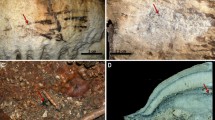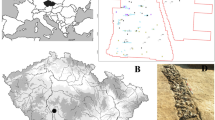Abstract
THE discovery to which this letter relates was made towards the end of September of last year. For the past eighteen months I have spent a considerable amount of time investigating the deposits forming the cliffs of the north-east coast of Norfolk, and have already published a paper dealing with certain humanly fashioned flints found at, and in the neighbourhood of, Mundesley (Proc. Prehis. Soc. E. Anglia, vol. iii., part ii., pp. 219–43). I devoted my attention during last year to the district of Cromer, and have now to record the discovery of a flint-workshop site, which, in my opinion, is referable to the lowermost division of the Pliocene Forest Bed series. As is well known, the Cromer Forest Bed is generally regarded as of Newer Pliocene age, and was laid down after the deposition of the marine Weybourn Crag (latest beds of the Norwich Crag), and before the commencement of the great Pleistocene glaciations. In the Geological Survey memoir, “The Pliocene Deposits of Britain,” Mr. Clement Reid states: “Where most complete, the ‘Forest Bed’ consists of three divisions—an Upper and a Lower Fresh-water Bed and an intermediate estuarine deposit.” In many places along the coast the upper portion of the Cromer Forest Bed series can be seen in section towards the base of the cliff, but the lower part, being covered by beach material, can seldom be observed except when a succession of northwesterly gales has caused the sea to scour away the sand and shingle. It is now, however, possible at low Water to examine the basal portion of the Cromer Forest Bed deposits when the receding tide has laid bare certain areas which only a comparatively short time ago were covered by great masses of Glacial and other strata in the then existing cliff. The site at Cromer where the humanly fashioned flints dealt with in this letter were found covers an area of foreshore about 150 yards long by 100 yards wide, and is almost opposite the north-western termination of the sea-wall at that place.
This is a preview of subscription content, access via your institution
Access options
Subscribe to this journal
Receive 51 print issues and online access
$199.00 per year
only $3.90 per issue
Buy this article
- Purchase on Springer Link
- Instant access to full article PDF
Prices may be subject to local taxes which are calculated during checkout
Similar content being viewed by others
Author information
Authors and Affiliations
Rights and permissions
About this article
Cite this article
MOIR, J. Flint Implements from the Cromer Forest Bed. Nature 106, 756–757 (1921). https://doi.org/10.1038/106756a0
Issue Date:
DOI: https://doi.org/10.1038/106756a0
Comments
By submitting a comment you agree to abide by our Terms and Community Guidelines. If you find something abusive or that does not comply with our terms or guidelines please flag it as inappropriate.



